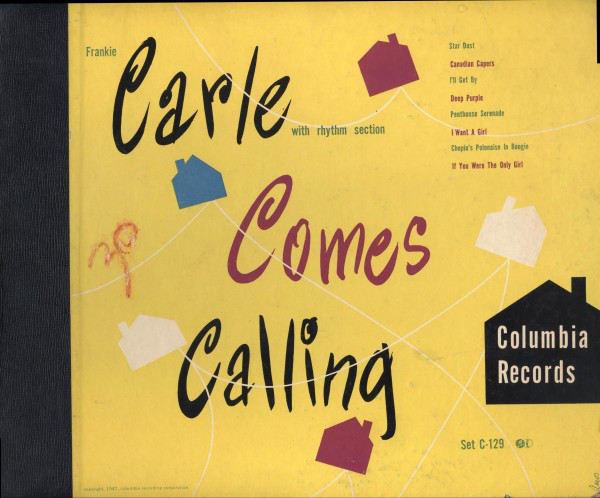15. 11 January 1947
Stan Kenton & His Orchestra
Artistry In Rhythm
No.2 for 1 week
No.1 at the time Harry James – All Time Favorites
Tracks
Come Back To Sorrento, Artistry In Bolero, Willow Weep For Me, Fantasy, Safranski Artistry In Bass, Opus In Pastels, Ain’t No Misery In Me, Artistry In Percussion
The album long playing format was made for someone like Stan Kenton who liked to experiment with his musical style and present his audience with jazz that was slightly different and could guide them to listen to other pieces as well as his own. He had achieved five hit singles to date, the biggest being the no.2 Tampico but the album Artistry In Rhythm gave his musicians an opportunity to expand with the Latin flavoured two opening tracks, Come Back To Sorrento and Artistry In Bolero. His orchestra featured Al Anthony, Bob Gioga, Bob Cooper, Vido Musso Al Anthony and Boots Mussulli on saxophones, Bart Varsalona, Kai Winding, Miff Sines and Milt Kabak on trombones, Buddy Childers, Chico Alvarez, John Anderson, Ken Hanna and Ray Wetzel on trumpets, Eddie Safranski on bass, who had a track named after him Safranski Artistry In Bass, Bob Ahern and Shelly Manne on drums and Stan Kenton on piano, leading the band. He also credited on two tracks, Willow Weep For Me and Aint No Misery In Me, June Christy on vocals who had been the vocalist on Tampico and also his most recent and what turned out to be his final hit single, Shoo Fly Pie And Apple Pan Dowdy.
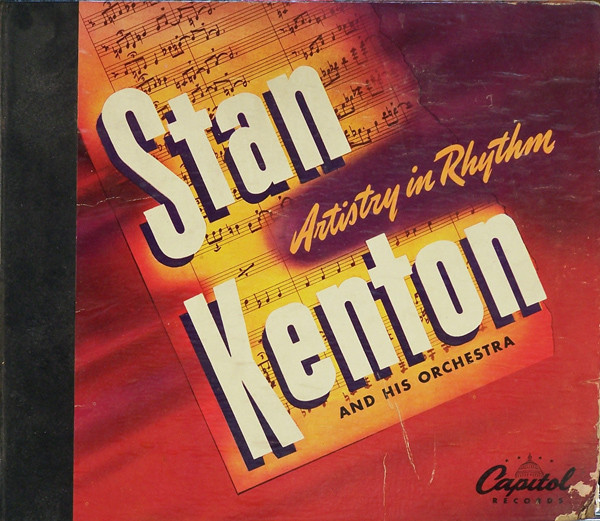
16. 25 January 1947
Vaughn Monroe
Vaughn Monroe’s Dreamland Special
No.2 for 1 week
No.1 at the time Glenn Miller – Glenn Miller
Tracks
I’ll See You In My Dreams, Drifting And Dreaming, Meet Me Tonight In Dreamland, My Isle Of Golden Dreams, Did You Ever See A Dream Walking, I’ve Got A Pocketful Of Dreams, Dream, My Dreams Are Getting Better All The Time
Vaughn Monroe’s previous album On The Moonbeam was a concept album with every song having something to do with the moon and he continued the concept this time with Vaughn Monroe’s Dreamland Special, all eight tracks on the four disc set mentioning Dreams, Dreaming or Dreamland. None of the songs had been hit singles for Monroe who had hit the top of the singles charts twice to date with There I’ve Said It Again and Let It Snow Let It Snow Let It Snow, but he delved deep into the catalogue of songs that would fit on this album and came up with Meet Me Tonight In Dreamland, a monthly no.1 hit by Henry Burr in 1910, I’ll See You In My Dreams a no.1 for Isham Jones in 1925, two number one hits from the USA Weekly/Your Hit Parade era Did You Ever See A Dream Walking by Meyer Davis in 1934 and I’ve Got A Pocketful Of Dreams from Bing Crosby in 1938, as well as two more recent no.1s Dream and My Dreams Are Getting Better All The Time both chart toppers from 1945. On some of the tracks he sang with the Norton Sisters and on others he used the Moon Maids, Betty Norton, Ziggy Talent and Marilyn Duke.
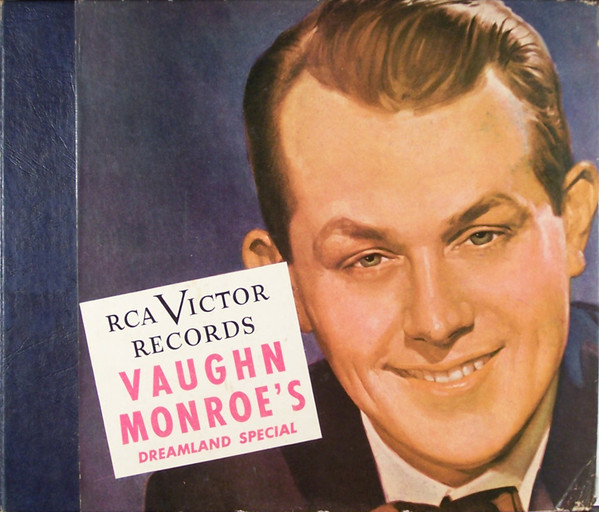
17. 8 March 1947
Tommy Dorsey
All Time Hits
No.2 for 4 weeks
No.1 at the time Al Jolson – In Songs He Made Famous
Tracks
Boogie Woogie, On The Sunny Side Of The Street, Somewhere A Voice Is Calling, Hawaiian War Chant, Embraceable You, After You’ve Gone, Chicago, Opus No.1
Tommy Dorsey’s second album to peak at no.2 was All Time Hits and one might think this was a compilation of his greatest hits, but it wasn’t. With twelve no.1 singles to choose from to place on an album called All Time Hits, the only Tommy Dorsey hits were the first track Boogie Woogie which peaked at no.4 in 1945 and the final track Opus No. 1 which hit no.8. also in 1945. The rest were a mixture of hit singles for other artists On The Sunny Side Of The Streeet which had hit no.3 for Ted Lewis & His Band in 1930, Hawaiian War Chant which had hit no.8 for Spike Jones in 1946, although Dorsey had recorded the original of the new version of the song, Embraceable You which had been no.1 for Loring Red Nichols & His Orchestra in 1930 and three other songs, although well known, had not been chart hits in any era to date. The album cover also stated, with Frank Sinatra, Jo Stafford And The Pied Pipers and all of these did perform as vocalists on one track each, Sinatra on Somewhere A Voice Is Calling and Jo Stafford & The Pied Pipers on Embraceable You, but it failed to mention Sy Oliver who sang on the track Chicago and The Sentimentalists who sang on two of the tracks On The Sunny Side Of The Street and again on Chicago. Half of the songs on the album were instrumentals credited only to Tommy Dorsey & His Orchestra including his two hits and Hawaiian War Chant and Chicago.
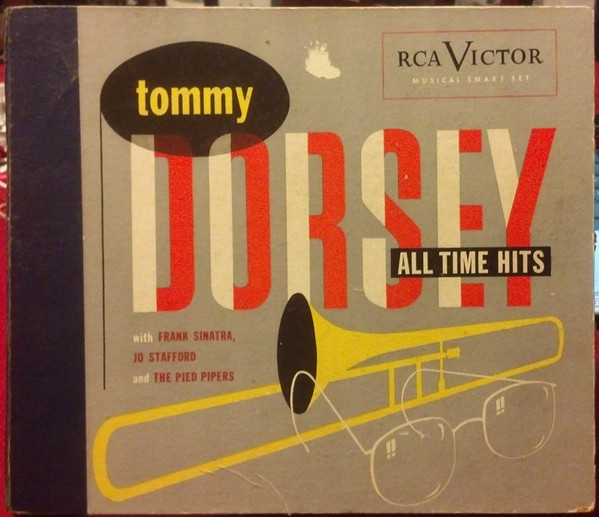
18. 5 April 1947
Freddy Martin & His Orchestra
Concertos For Dancing
No.2 for 4 weeks
No.1 at the time Al Jolson – In Songs He Made Famous
Tracks
Tchaikovsky Piano Concerto No.1, Cornish Rhapsody Theme, Grieg Piano Concerto, Night And Day, Rachmaninov Piano Concerto No.2, Symphonie Moderne, Theme From The Warsaw Concerto, Intermezzo
Freddy Martin had a difficulty deciding which direction he wanted his music to take. On the one hand, he would record novelty hit singles like The Hut Sut Song and One Zy Two Zy I Love You Zy, straightforward ballads like April In Paris, the show song from Annie Get You Gun, Doin’ What Comes Naturally and a series of classical interpretations, in particular his biggest hit single, an arrangement of Tchaikovsky’s Piano Concerto no.1 with Jack Fina on the piano. Concertos For Dancing was a serious classical album which included pieces by Grieg, Rachmaninov and two classical film themes, Cornish Rhapsody from Love Story and Warsaw Concerto from Dangerous Moonlight. He also included a version of Cole Porter’s Night And Day with Murray Arnold on the piano and an instrumental version of his recent no.1 hit single Symphony which as a single was a vocal song with Clyde Rogers but on this album just featured the piano of Jack Fina. All the tracks were instrumental except the final song, Intermezzo which included just over one minute of vocals again by Clyde Rogers.
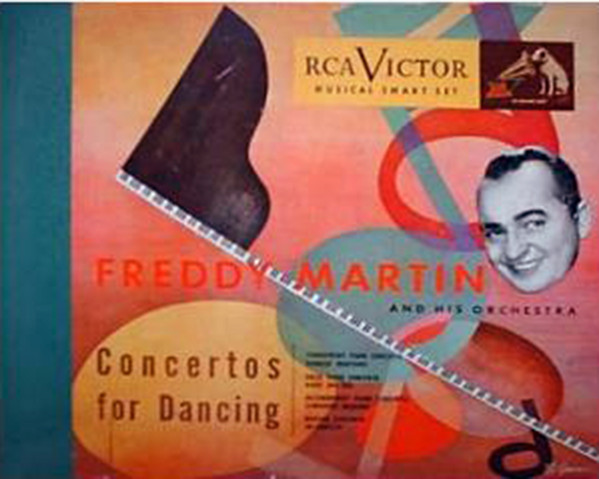
19. 19 April 1947
Will Bradley & His Orchestra (featuring Ray McKinley)
Boogie Woogie
No.2 for 2 weeks
No.1 at the time Al Jolson – In Songs He Made Famous
Tracks
Beat Me Daddy Eight To The Bar Part 1, Beat Me Daddy Eight To The Bar Part 2, Scrub Me Mama With A Boogie Beat, Boogie Woogie Conga, Down The Road A Piece, Celery Stalks At Midnight, Fry Me Cookie With A Can Of Lard, Chicken Gumboogie
Will Bradley’s only chart album, Boogie Woogie peaked at no.2 and came over six years after he had placed two singles, also at no.2 in the charts, Beat Me Daddy Eight To The Bar and Scrub With Mama With A Boogie Beat, both of which featured the vocals of Ray McKinley and were the first tracks on this album, Beat Me Daddy split into two parts as it was over five minutes long and took up both sides of the original 78. Ray McKinley had a separate credit on the record cover, stating featuring Ray McKinley but none of the other band members warranted a mention, not even Freddie Slack the pianist who did get a special mention on the label of the original single, nor Art Mendelsohn, Jo Jo Huffman, Nick Clazza and Sam Sachelle on saxophones, Steve Lipkins, Joe Wiedman and Al Mitchell on trumpets, Will Bradley, Jim Emert and Bill Corti on trombones, Steve Jordan on guitar, Doc Goldberg on bass, Freddie Slack on piano and Ray McKinley who doubled as the drummer. Boogie Woogie also included another of Will Bradley’s hit singles, Down The Road A Piece.
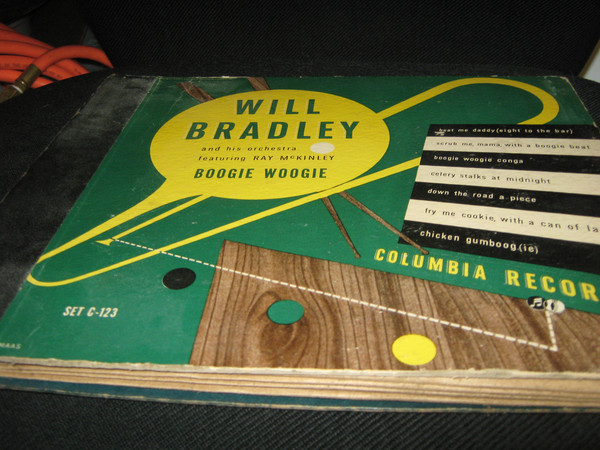
20. 17 May 1947
Frank Sinatra
Songs By Sinatra Volume 1
No.2 for 2 weeks
No.1 at the time Al Jolson – In Songs He Made Famous
Tracks
I’m Sorry I Made You Cry, I Concentrate On You, How Deep Is The Ocean, That Old Black Magic, Over The Rainbow, All The Things You Are, She’s Funny That Way, Embraceable You
Frank Sinatra had been no.1 with his previous album The Voice Of Frank Sinatra and Songs By Sinatra Volume 1 was a continuation of that album, a four-disc, eight song compilation of tracks that were not originally Sinatra hits, but in five of the cases, had been no.1 hits in the 1930s era of Your Hit Parade, two by Glenn Miller & His Orchestra, That Old Black Magic and Over The Rainbow, Tommy Dorsey’s All The Things You are, Guy Lombardo’s How Deep Is The Ocean and the oldest song on this collection, Embraceable You from 1930 by Loring Red Nichols. The three tracks that had been hit singles were I’m Sorry I Made You Cry, I Concentrate On You and She’s Funny That Way and all eight were orchestrated by Axel Stordahl. Songs By Sinatra Volume 1 had an unusual pattern to its chart life, entering at no.2, then the following week dropping out of the chart altogether, then re-entering the next week for a second week at no.2 although it had to share that position with a Dorothy Shay album that would eventually be the one that would unseat Al Jolson from his position at the top.
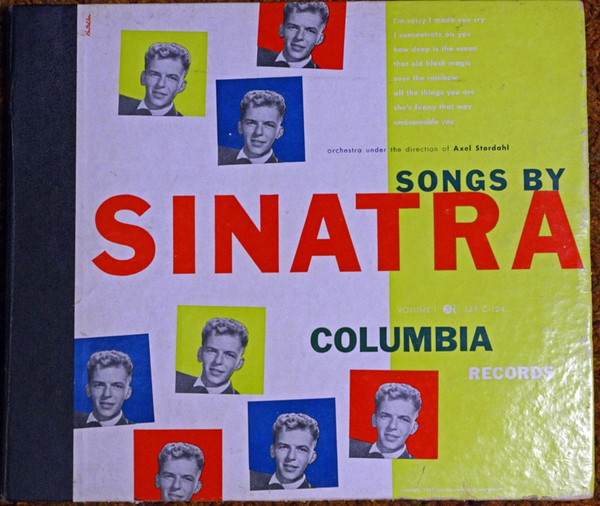
21. 24 May 1947
Wayne King & His Orchestra
Waltzes Volume 2
No.2 for 1 week
No.1 at the time Al Jolson – In Songs He Made Famous
Tracks
Song Of The Islands, I’ll Be With You In Apple Blossom Time, Mexicali Rose, Maria Elena, Carolina Moon, The Anniversary Waltz, Roses Of Picardy, ‘Til The Sands Of The Desert Grow Cold
Wayne King had his second album peak at no.2 following Plays Irving Berlin Melodies and this time he released an island more in tune with what he was known for, The Waltz King and the theme of this album was just waltzes, whoever they were written by. Waltzes Volume 2 was actually released before the Irving Berlin album, originally in 1941 around the time of his biggest hit in the Billboard Retail sales chart era, Maria Elena which was one of the tracks included on the album. He delved deep into the catalogue and recorded a waltz version of ‘Til The Sands Of The Desert Grow Cold, a monthly no.1 single by Alan Turner in 1913 and Carolina Moon, a hit for Gene Austin in 1929. Also included was the hit by The Andrews Sisters at the time the album was recorded in 1941, I’ll Be With You In Apple Blossom Time. It was confusing that this album was called Waltzes Volume 2 as Wayne King never recorded an album specifically titled Waltzes Volume 1, although most of his albums revolved around the theme of waltzing.
22. 12 July 1947
Frankie Carle
Carle Comes Calling
No.2 for 1 week
No.1 at the time Al Jolson – In Songs He Made Famous
Tracks
Stardust, Canadian Capers, I’ll Get By As Long As I Have You, Deep Purple, Penthouse Serenade When We’re Alone, I Want A Girl Just Like The Girl That Married Dear Old Dad, Chopin’s Polonaise In Boogie, If You Were The Only Girl
Frankie Carle was hot in the mid-1940s with two of the biggest hit singles of 1946, Oh What It Seemed To Be and Rumors Are Flying, neither of which were included on his third chart album, the previous two both having peaked at no.4 but Carle Comes Calling stopped at no.2, inevitably behind Al Jolson. Apart from being a bandleader who hit the singles charts in a big way with two songs sung by Marjorie Hughes, Frankie Carle was also a concert pianist and Carle Comes Calling showcased this side of his orchestra with most tracks being piano solos played by Carle including Hoagy Carmichaels’ Stardust which already had been recorded by hundreds of different artists, I’ll Get By As Long As I Have You, a number one single for Harry James, Deep Purple which had been a monthly no.1 for Larry Clinton in 1939 and possibly the oldest song on the album, I Want A Girl Just Like The Girl That Married Dear Old Dad which had been a monthly no.1 for the Peerless Quartet in 1911. If that wasn’t the oldest track on the album then certainly Chopin’s Polonaise In Boogie based on Chopin’s Polonaise in A Flat Major, written in 1842 was the oldest, but one doubts that Frédéric Chopin ever envisaged his Polonaise being turned into a boogie-woogie song.
